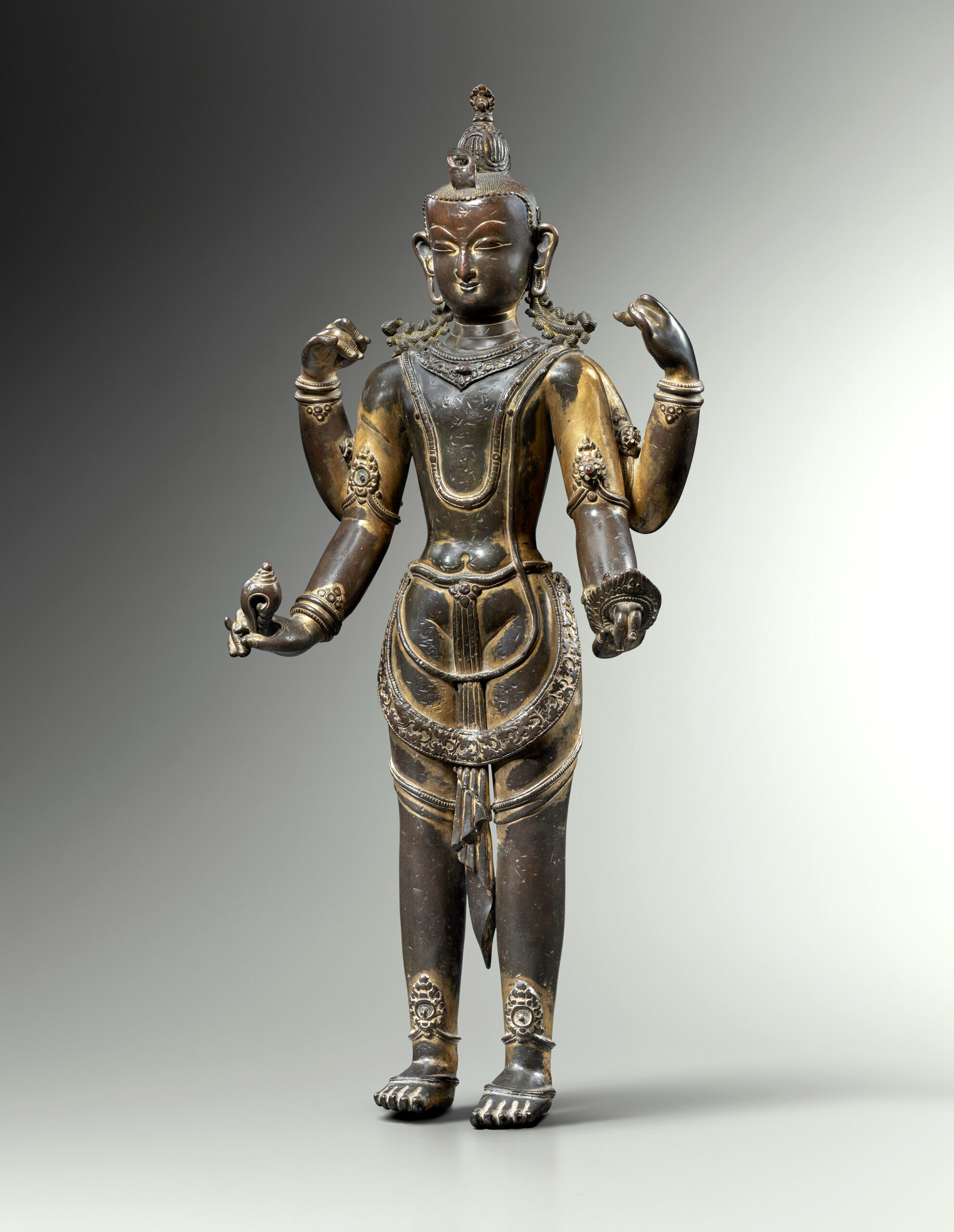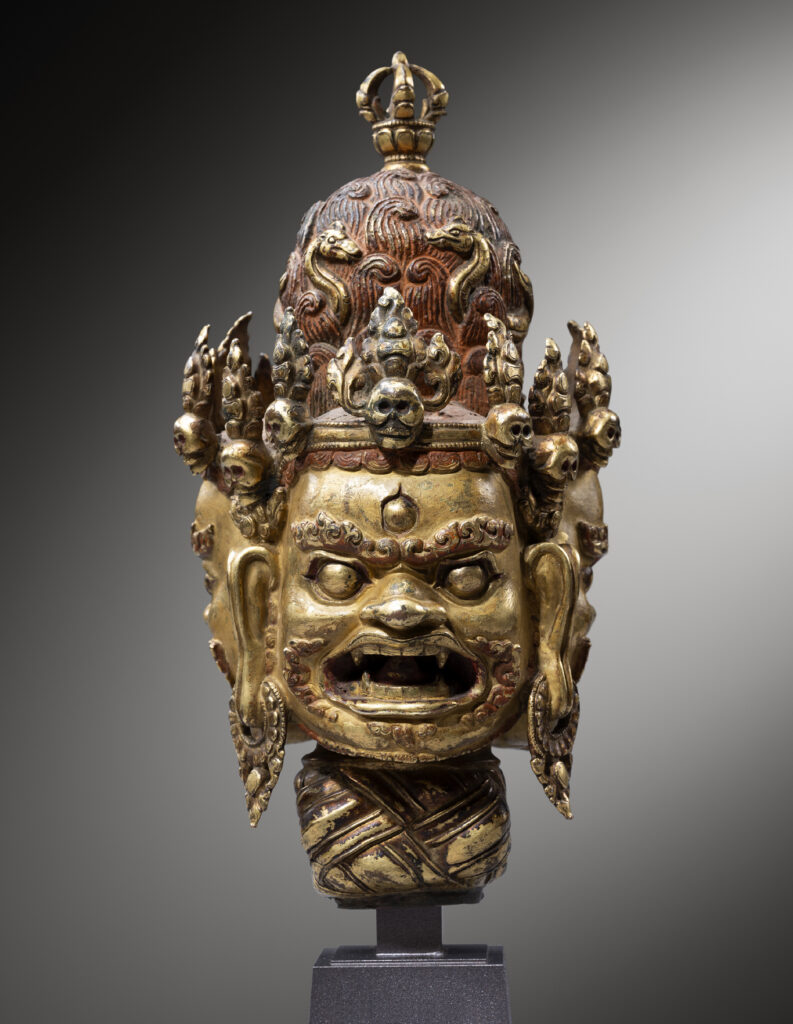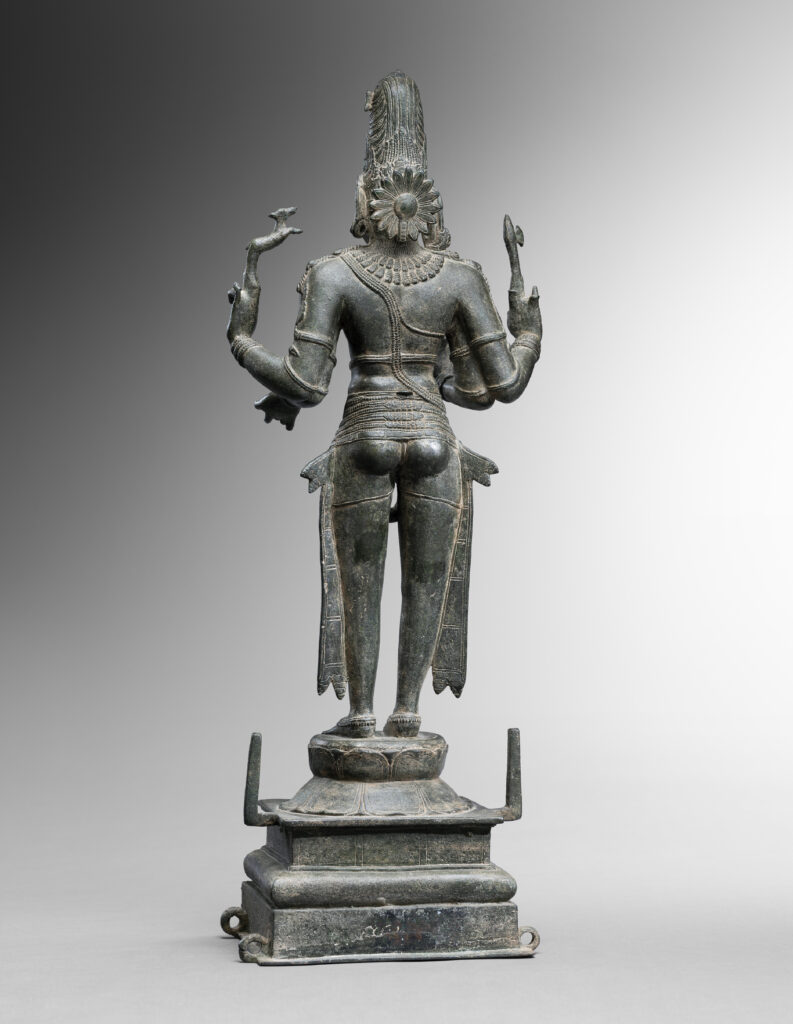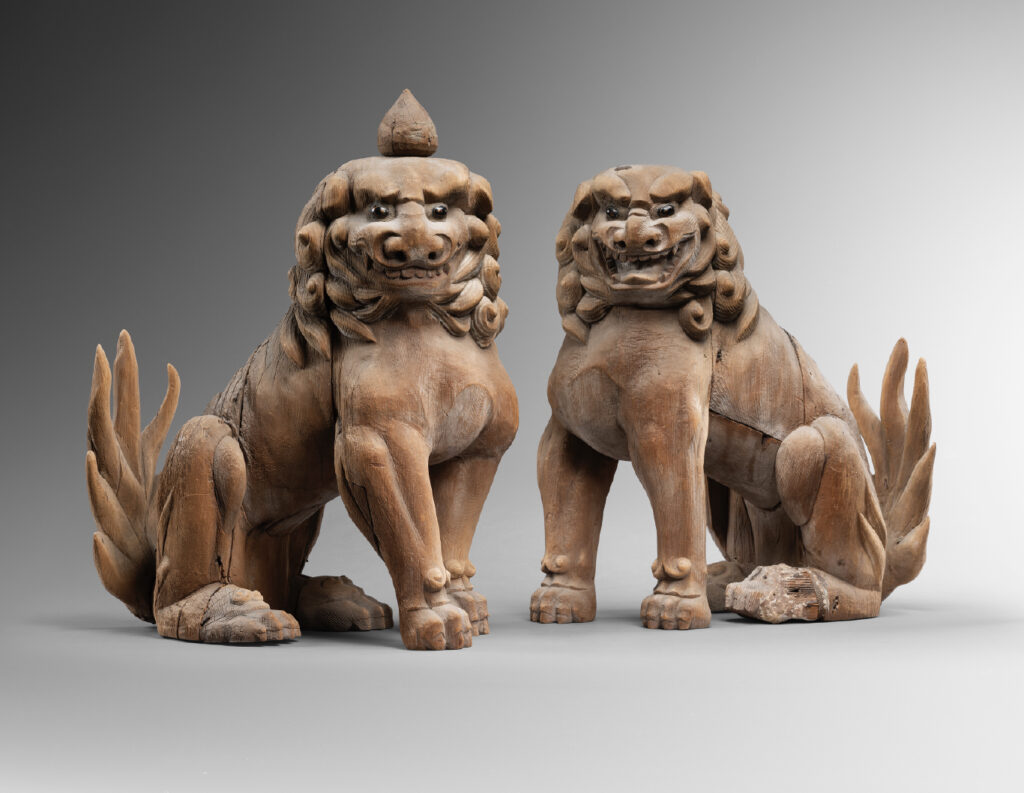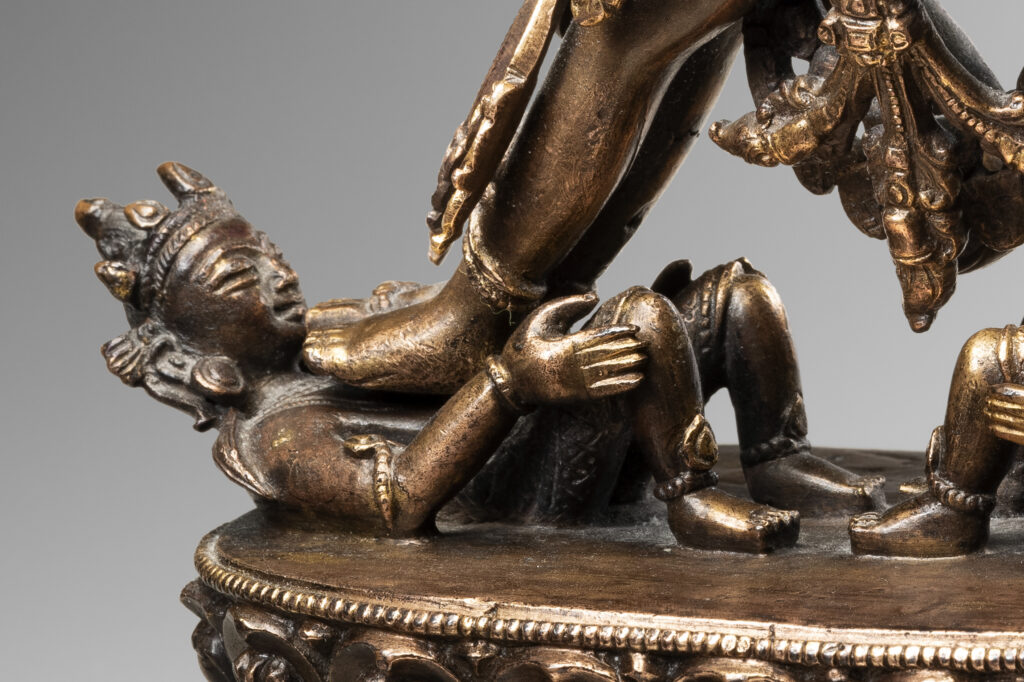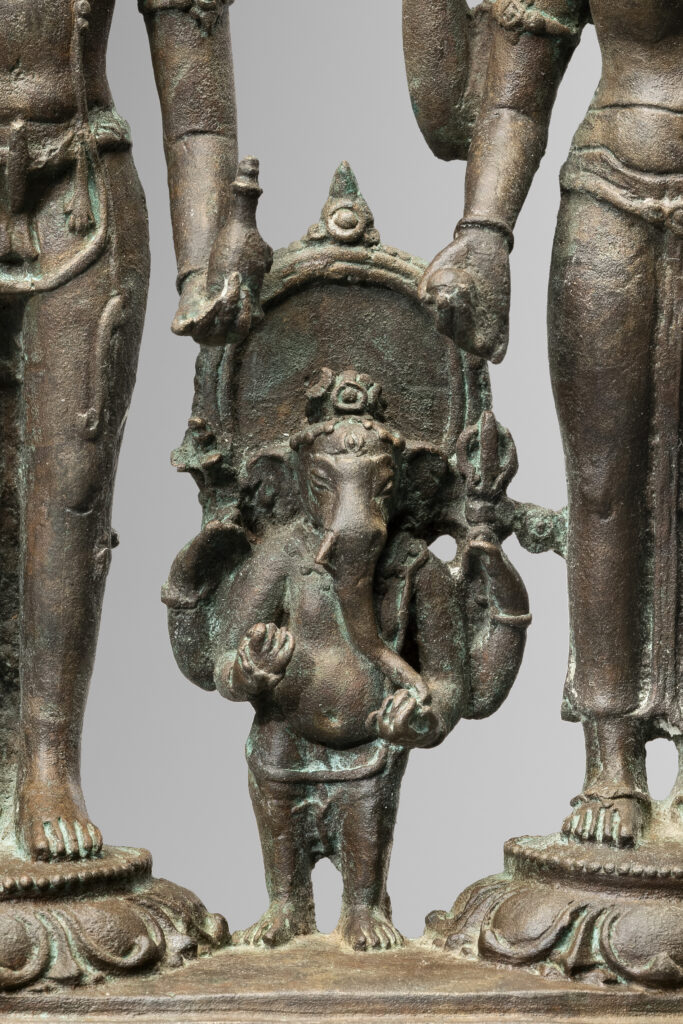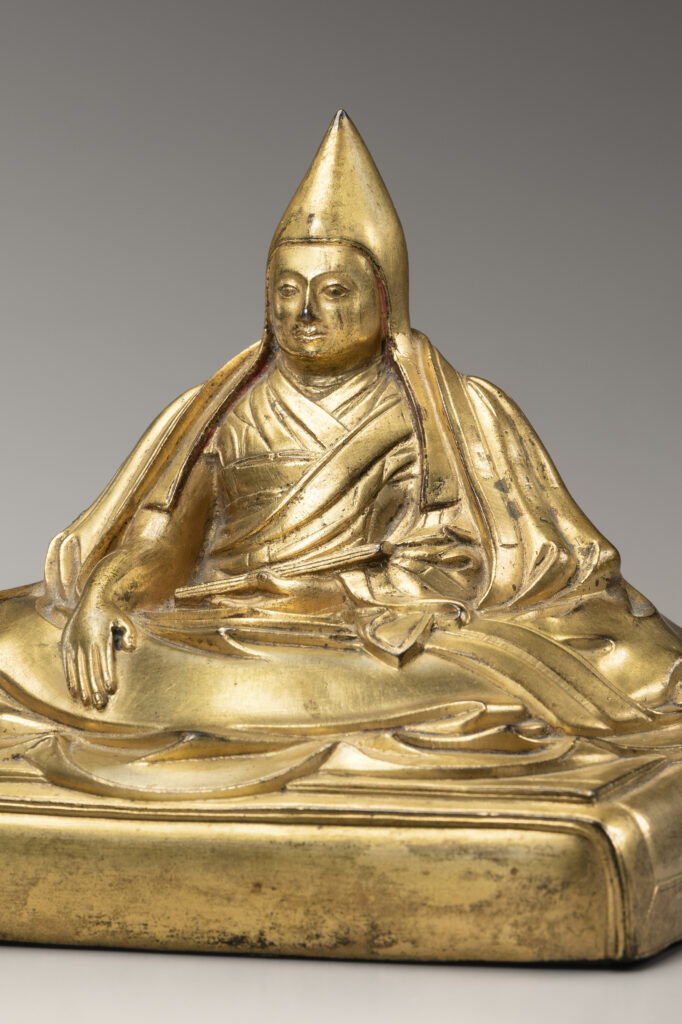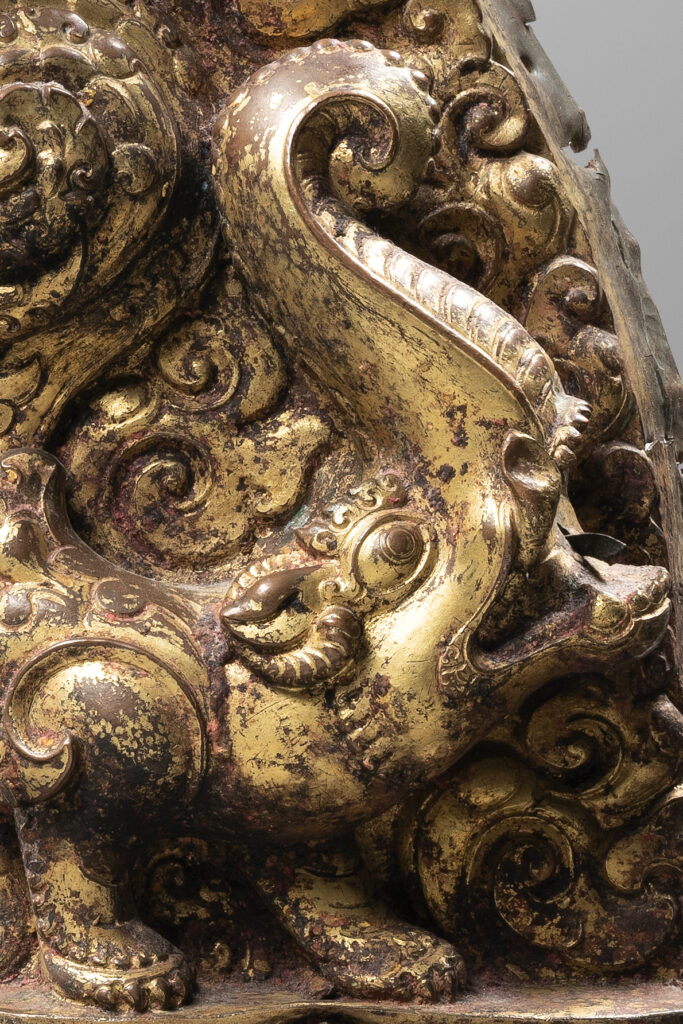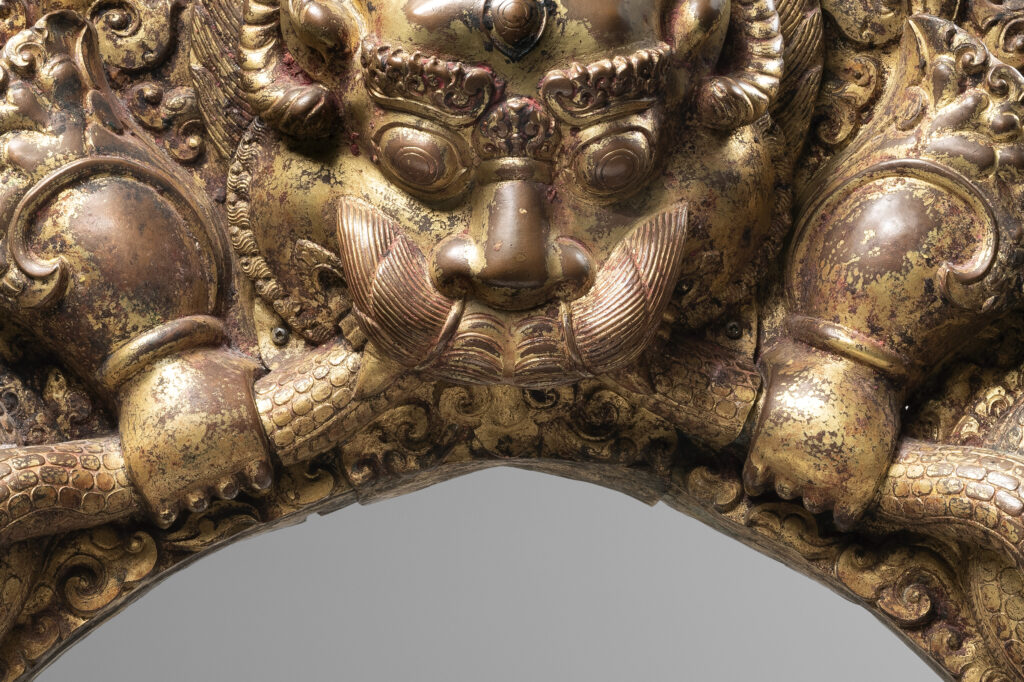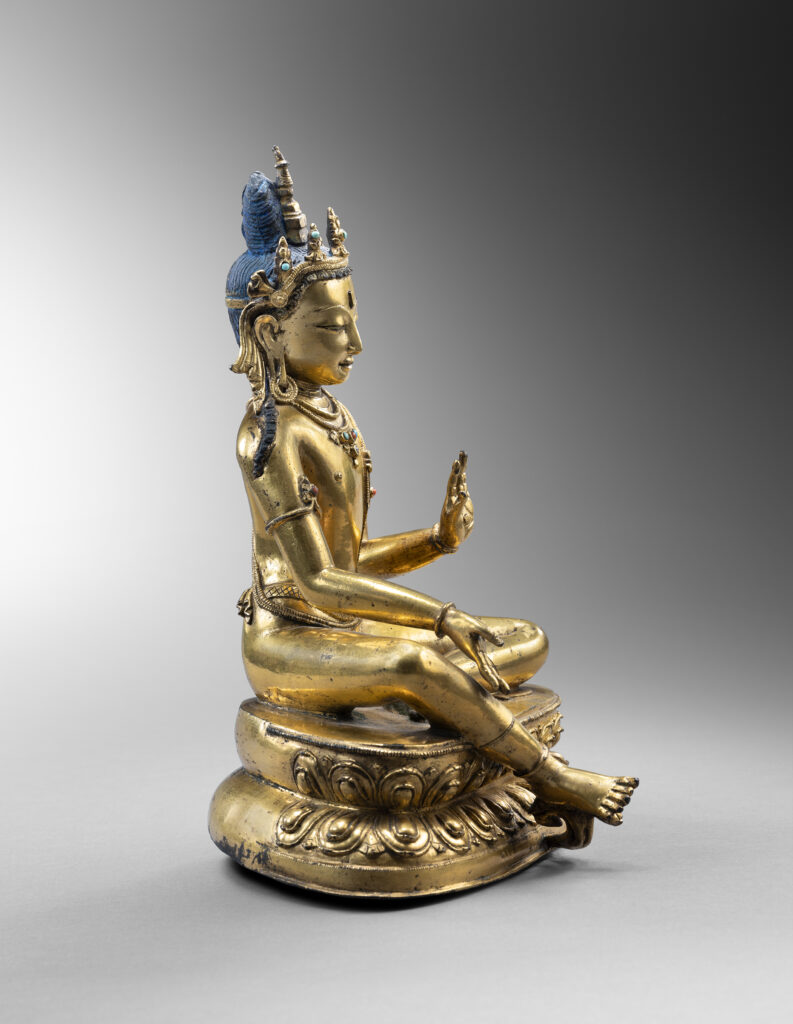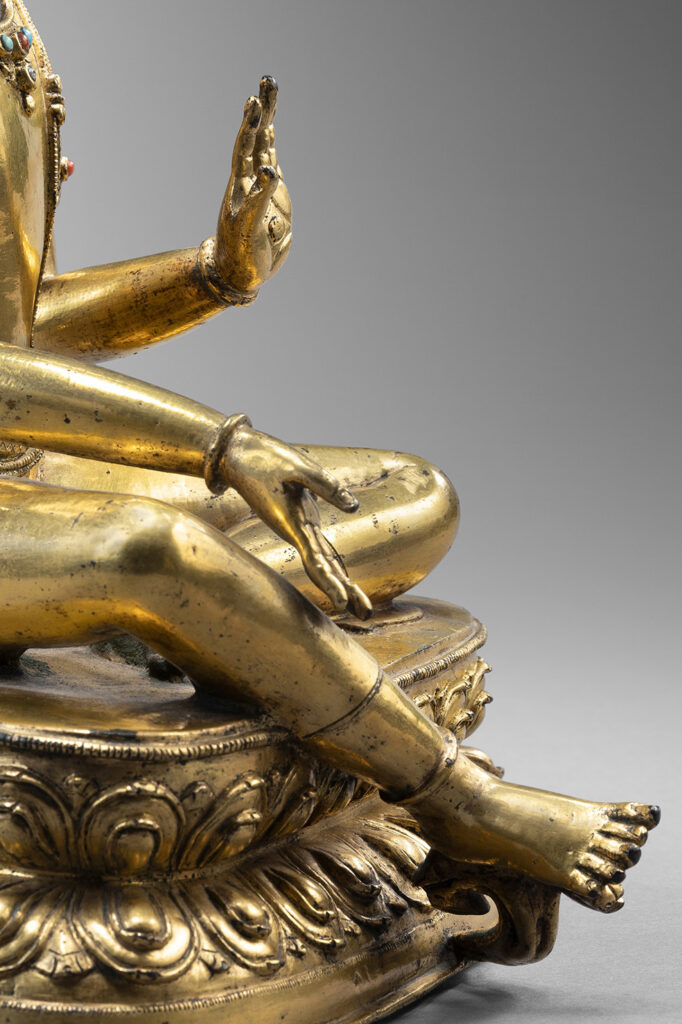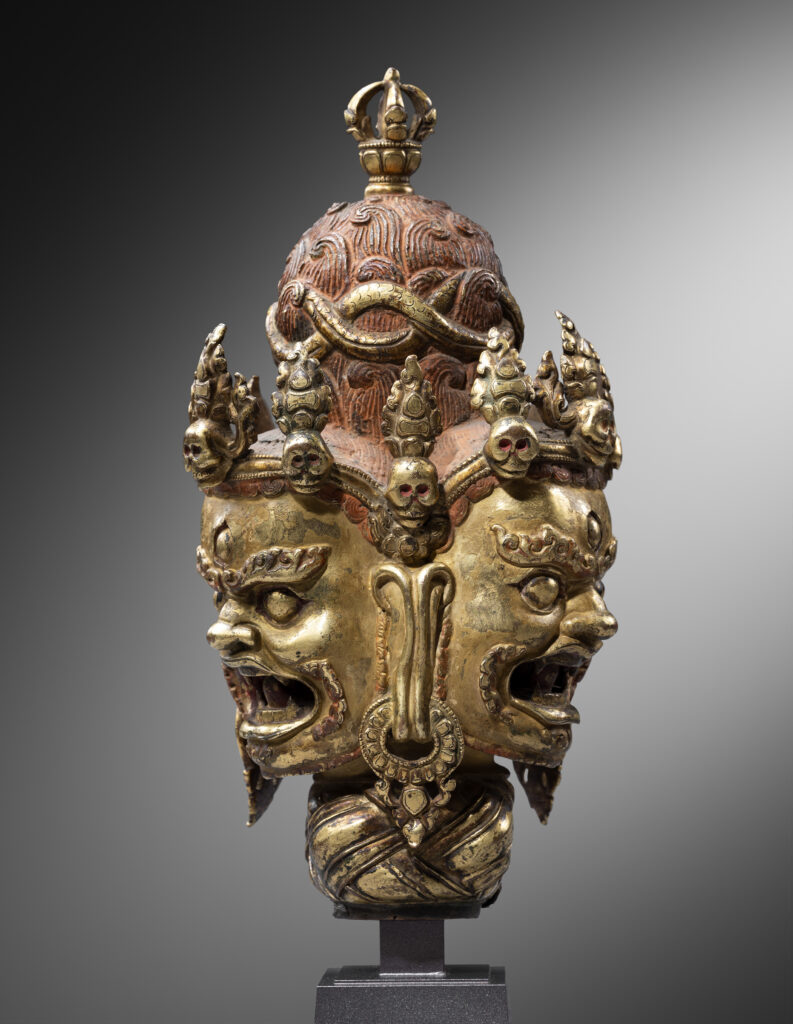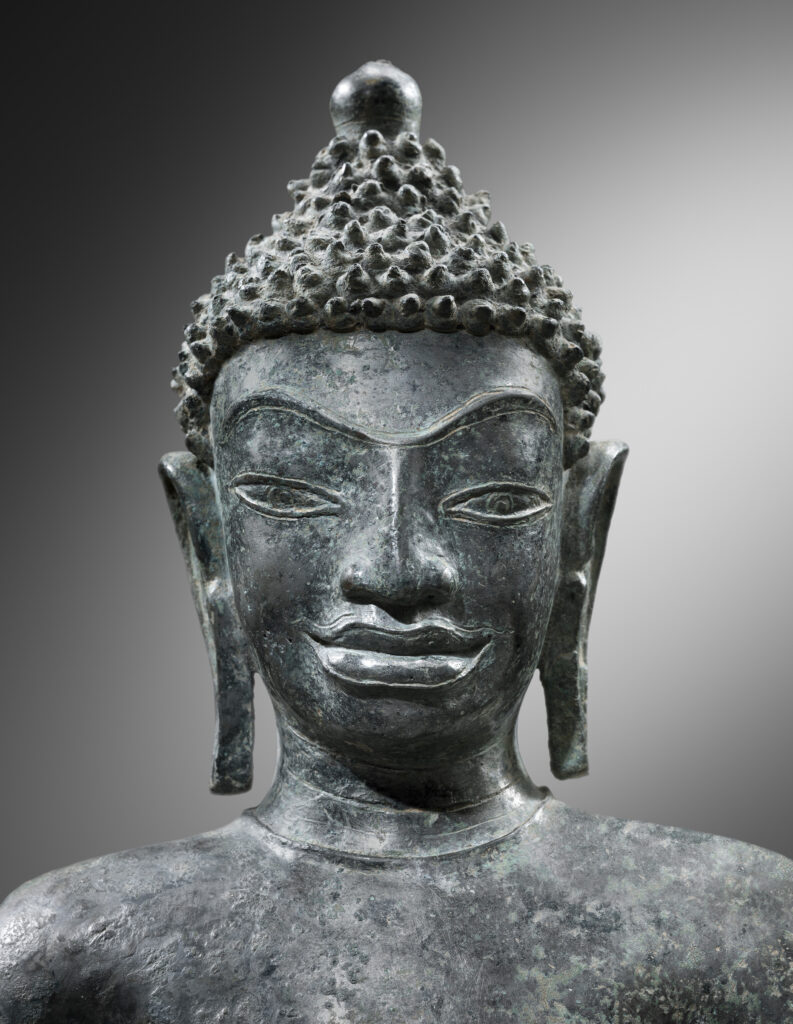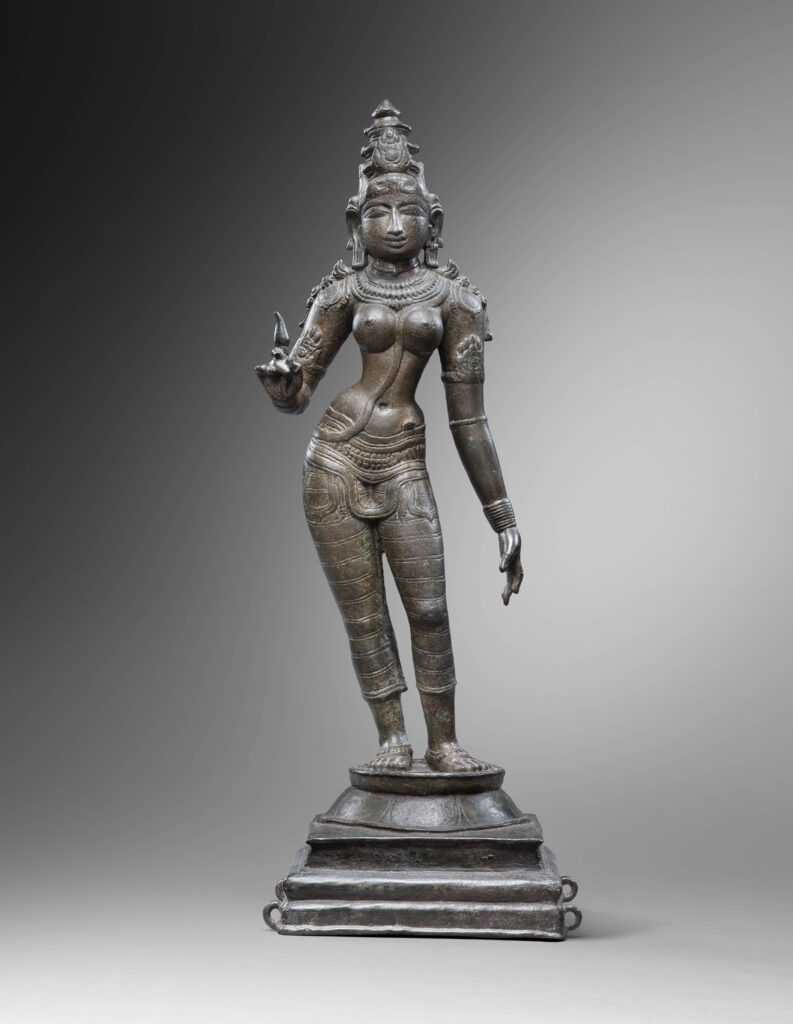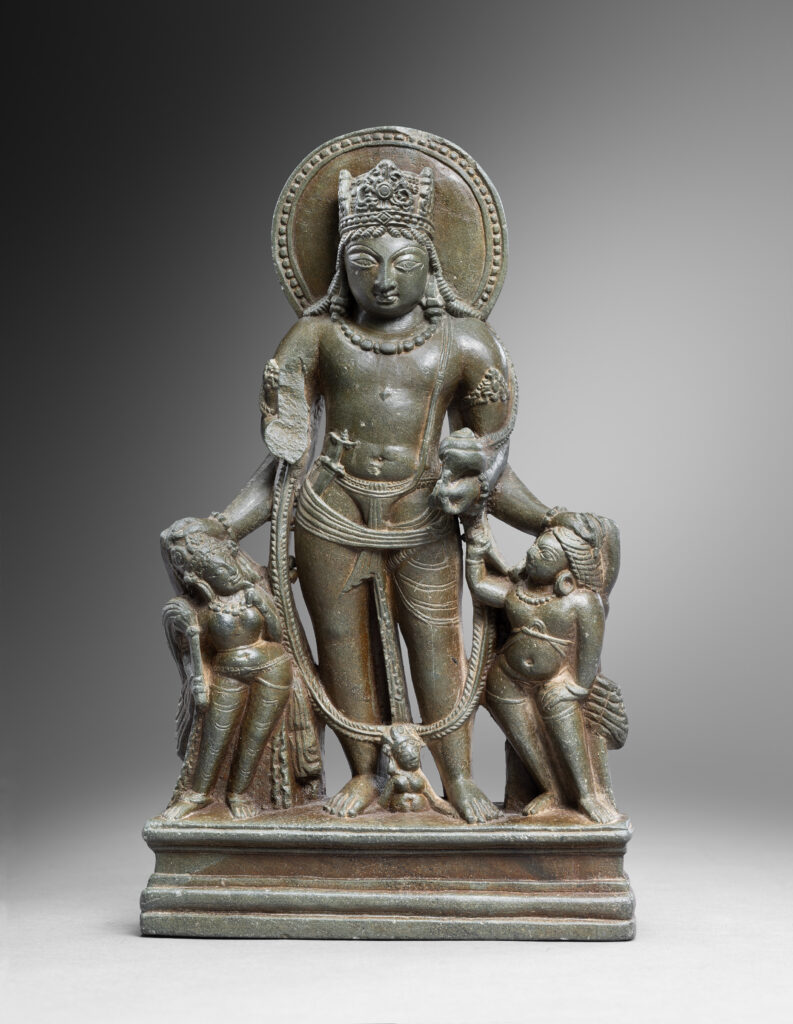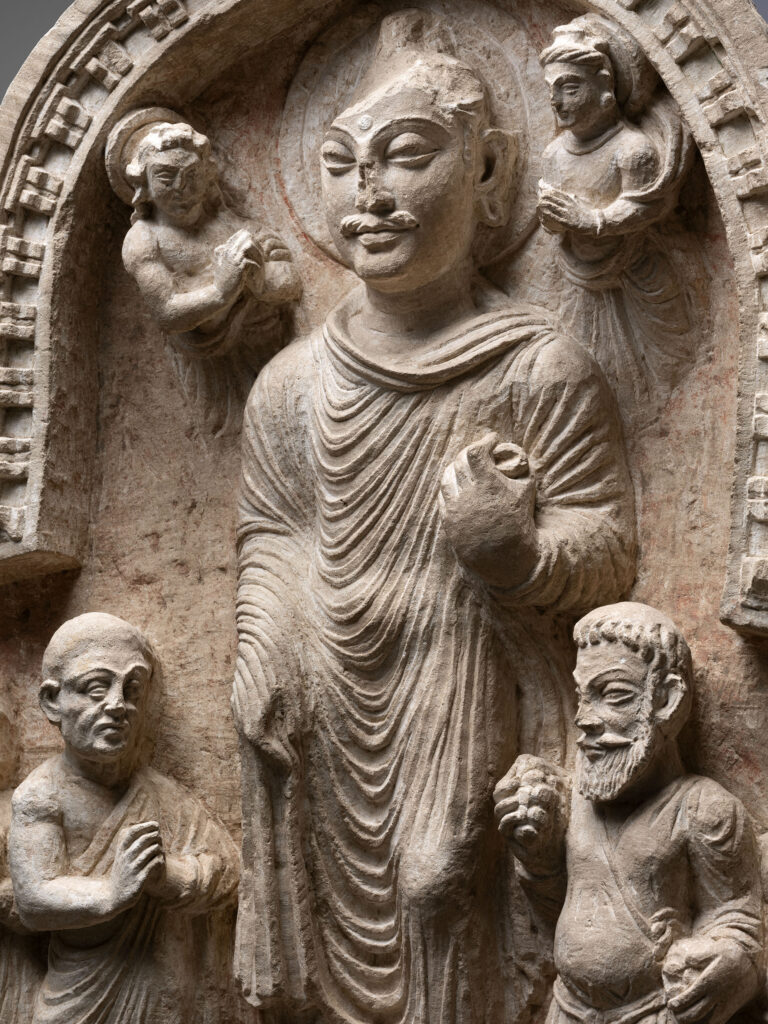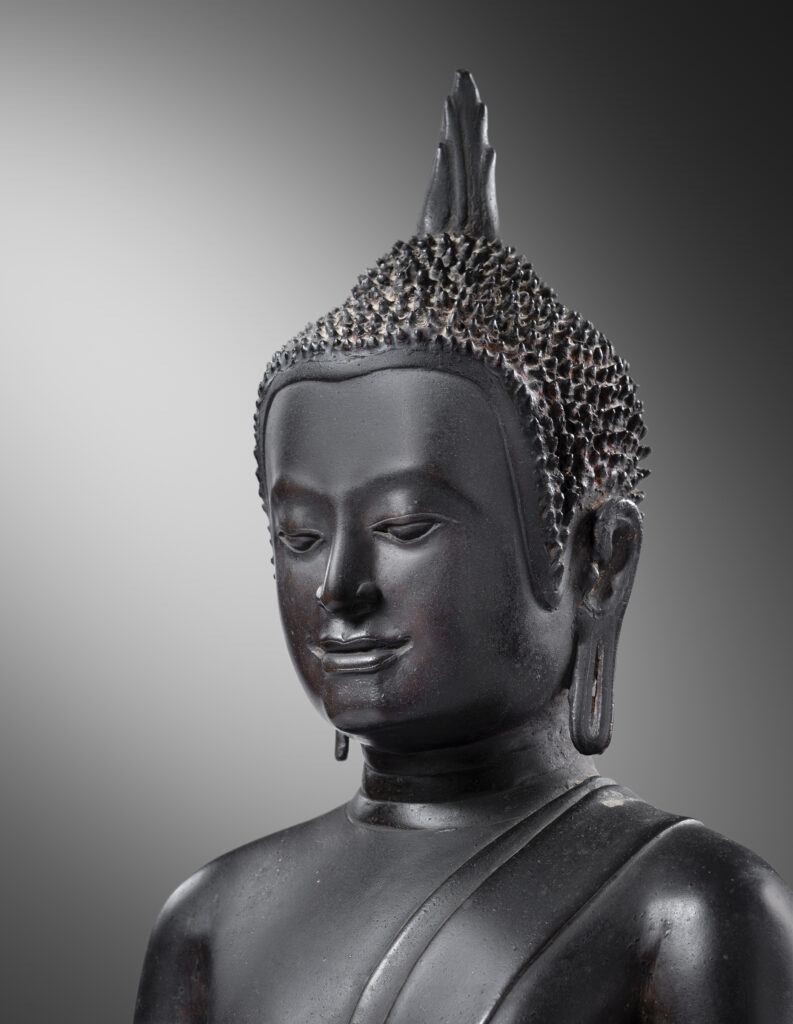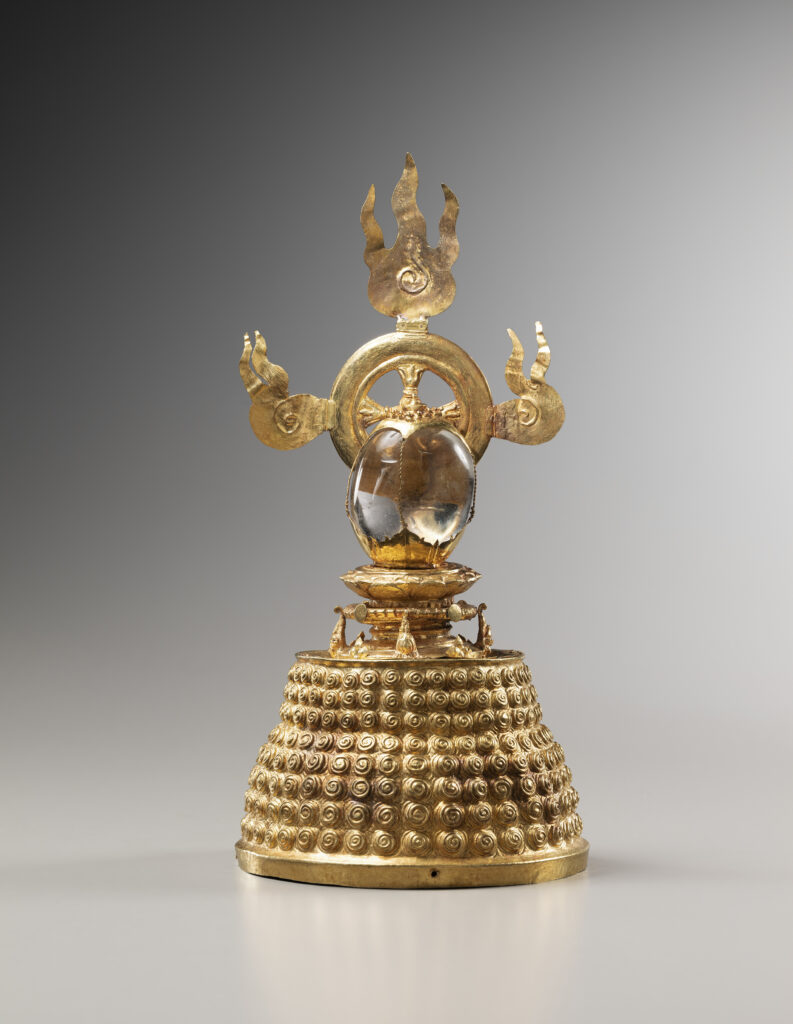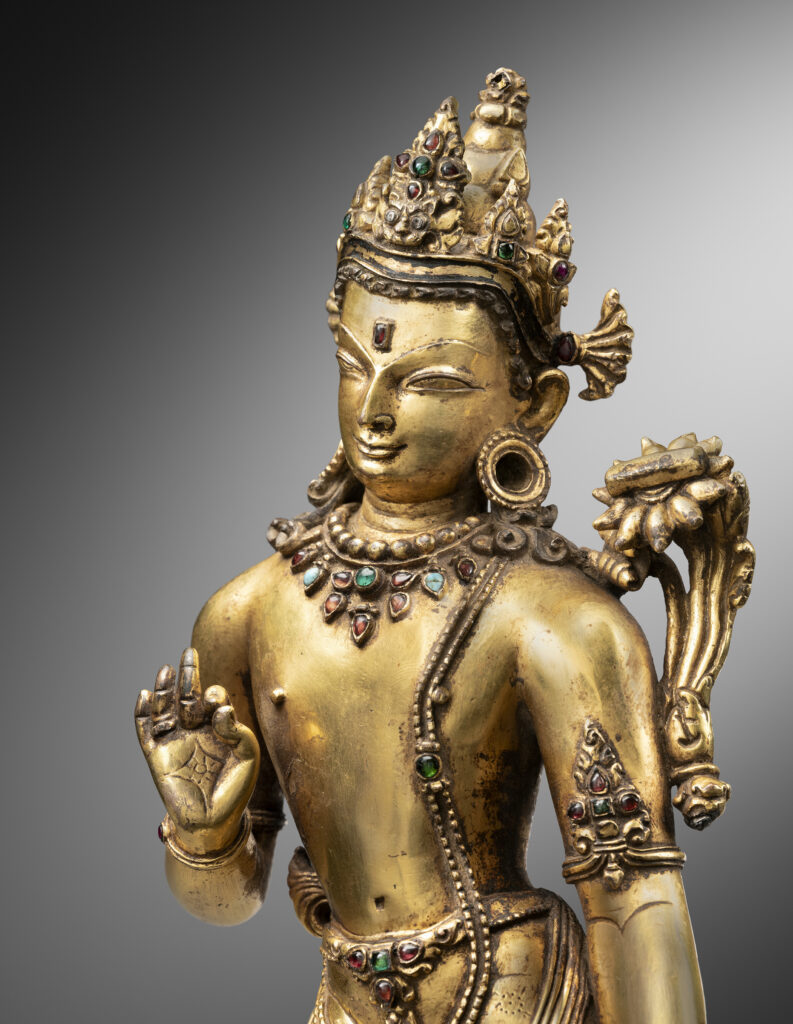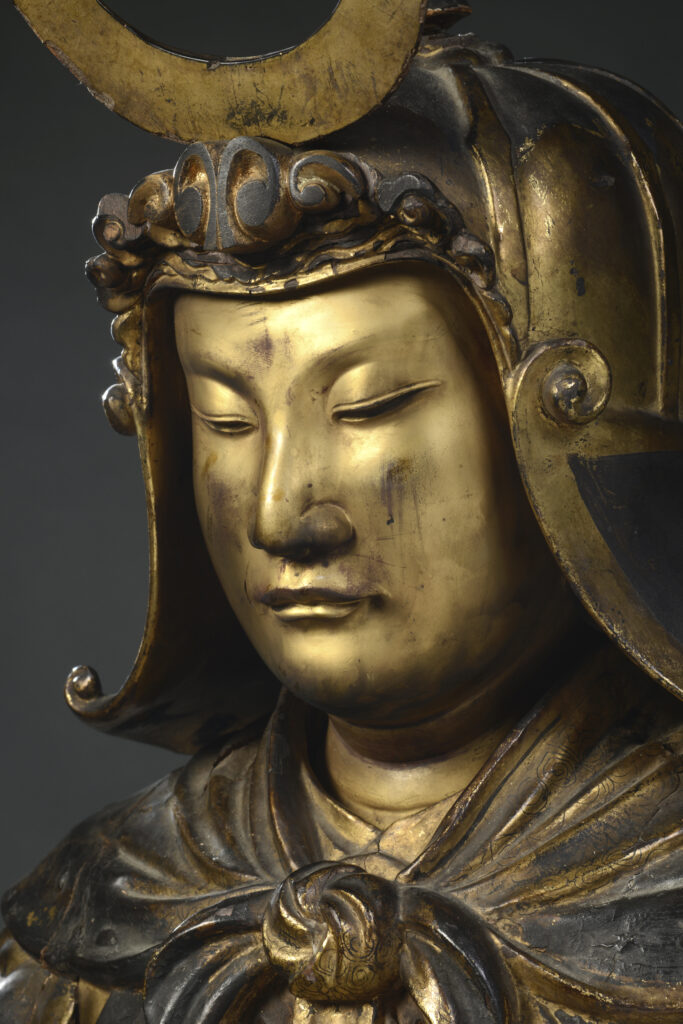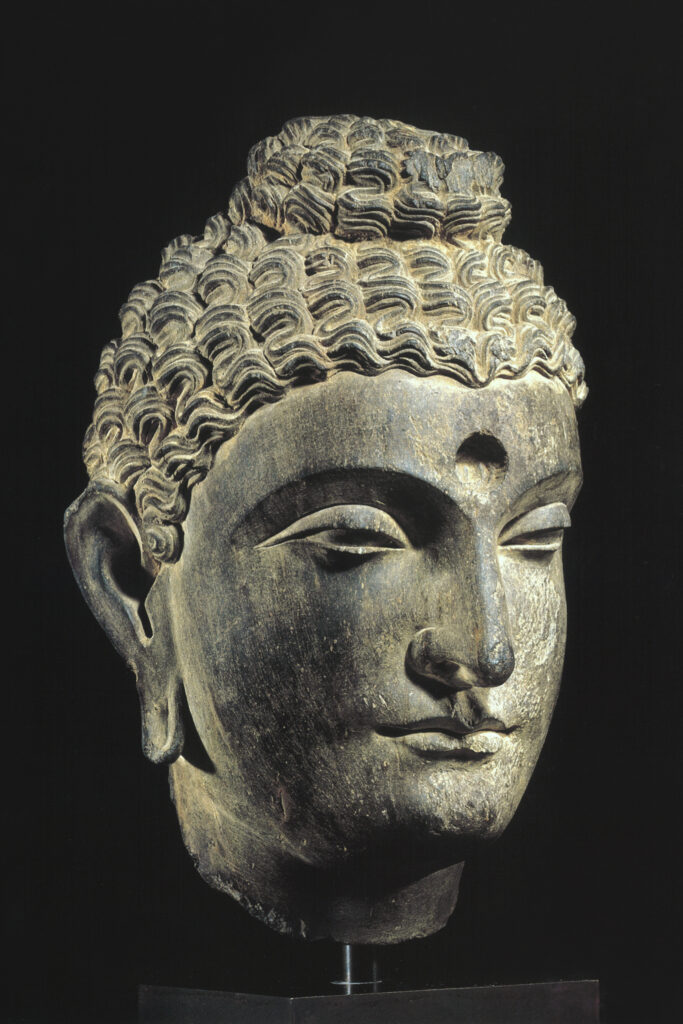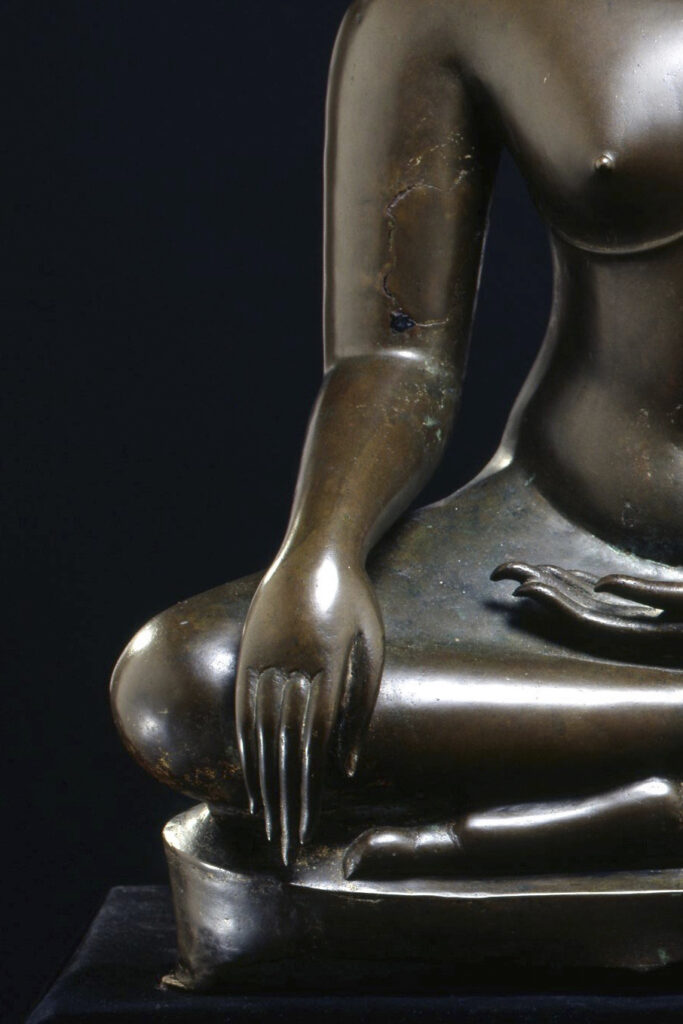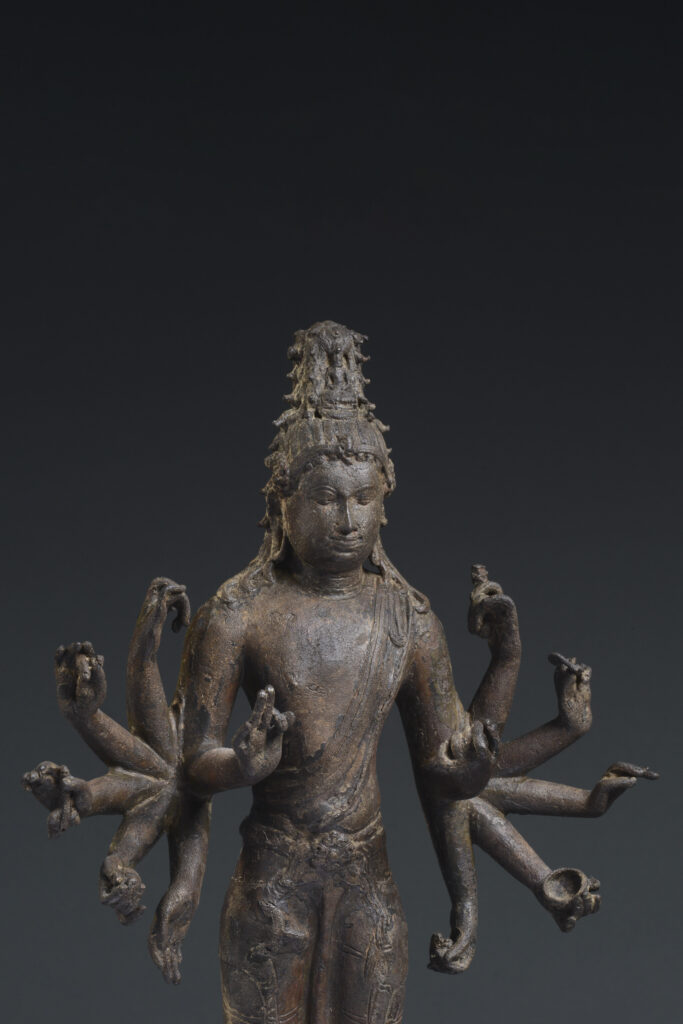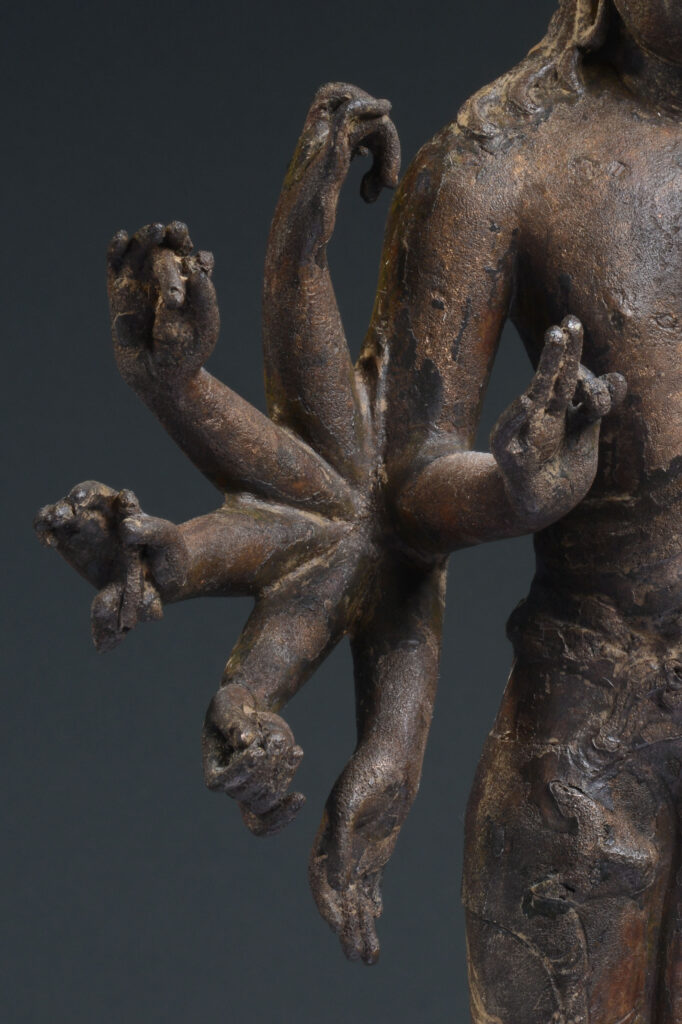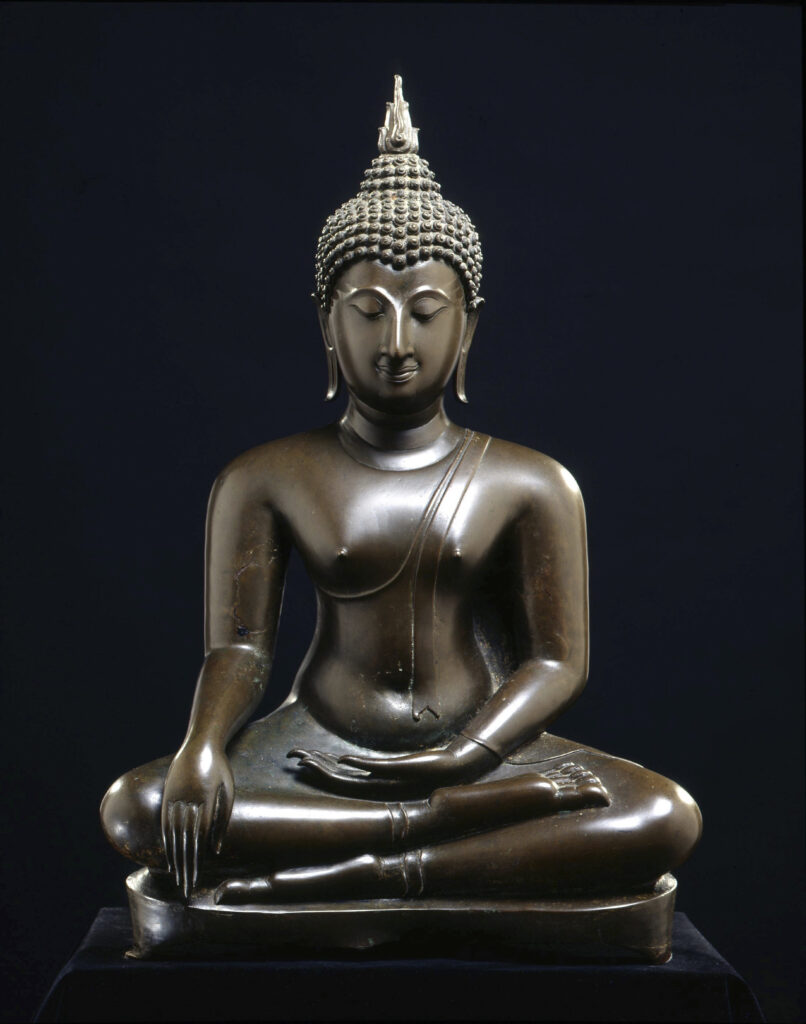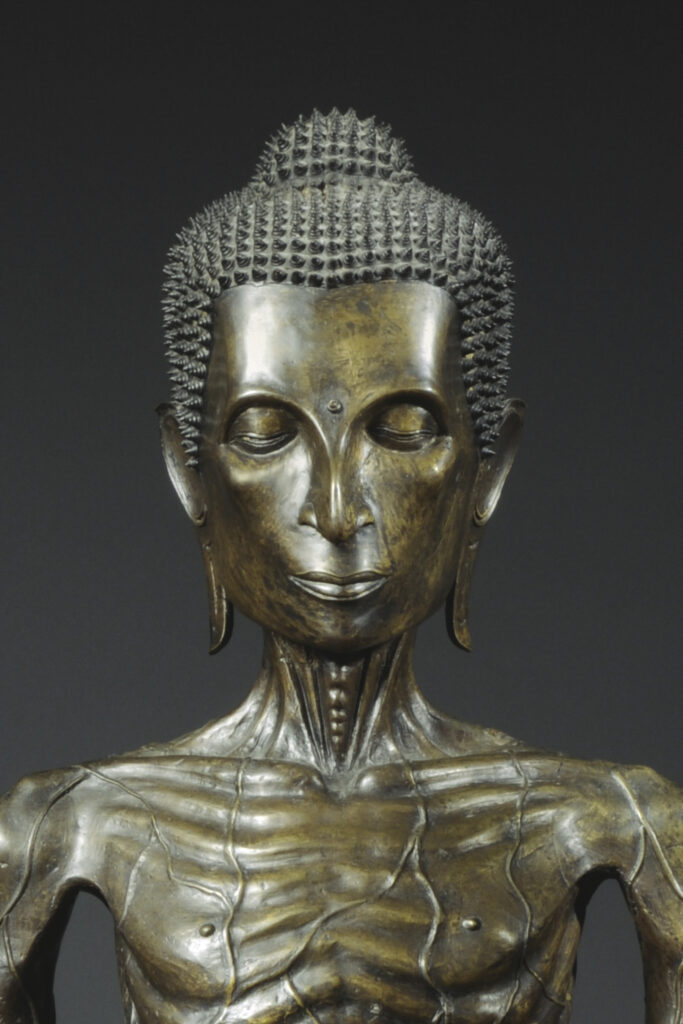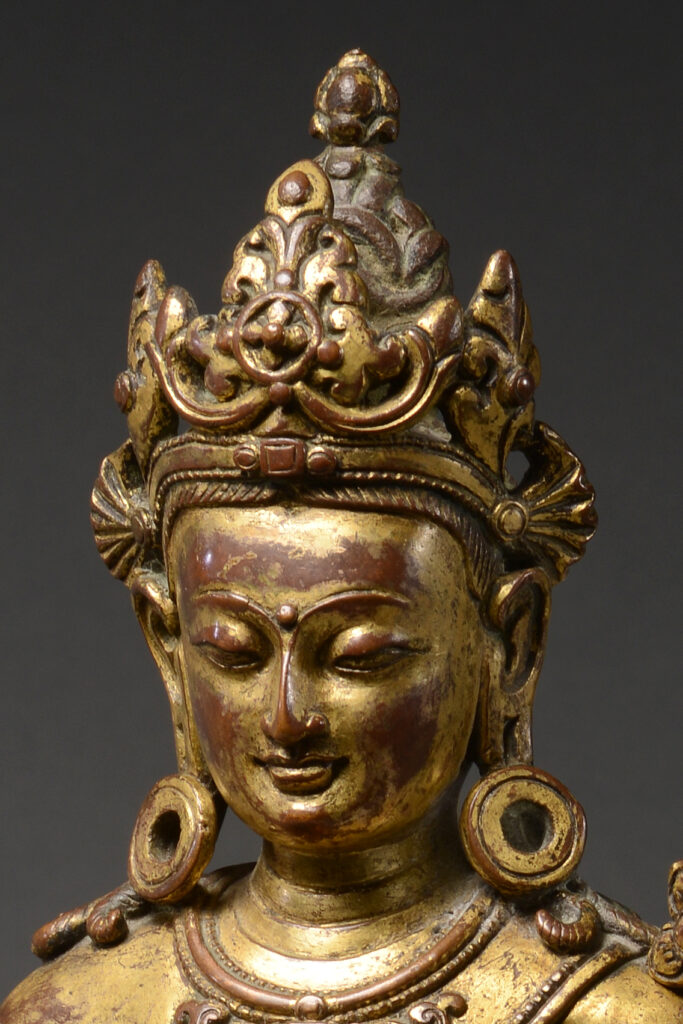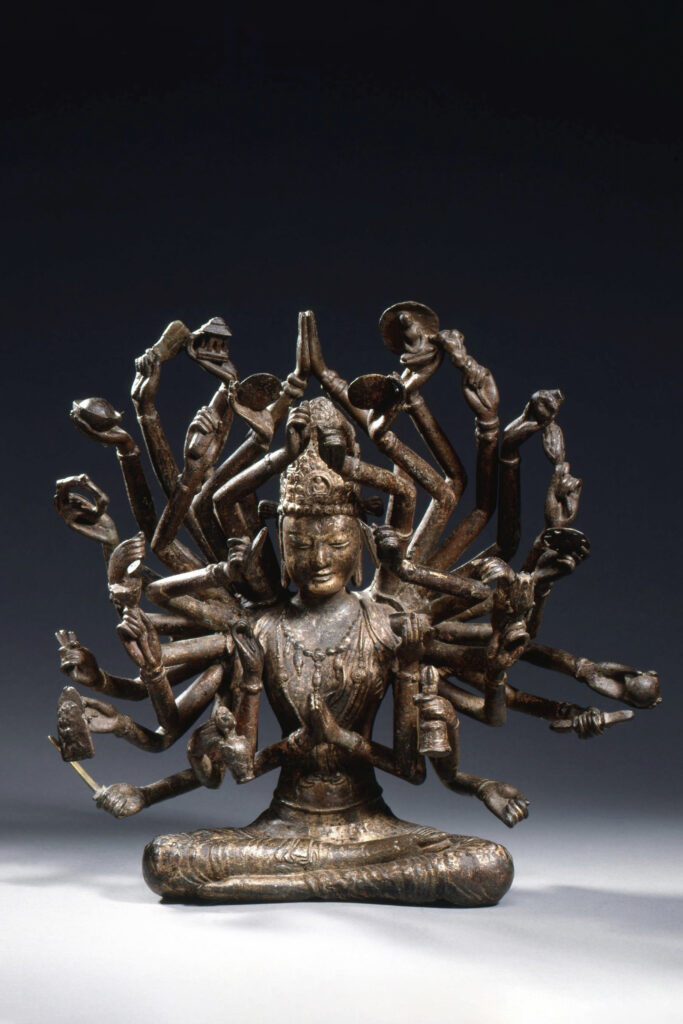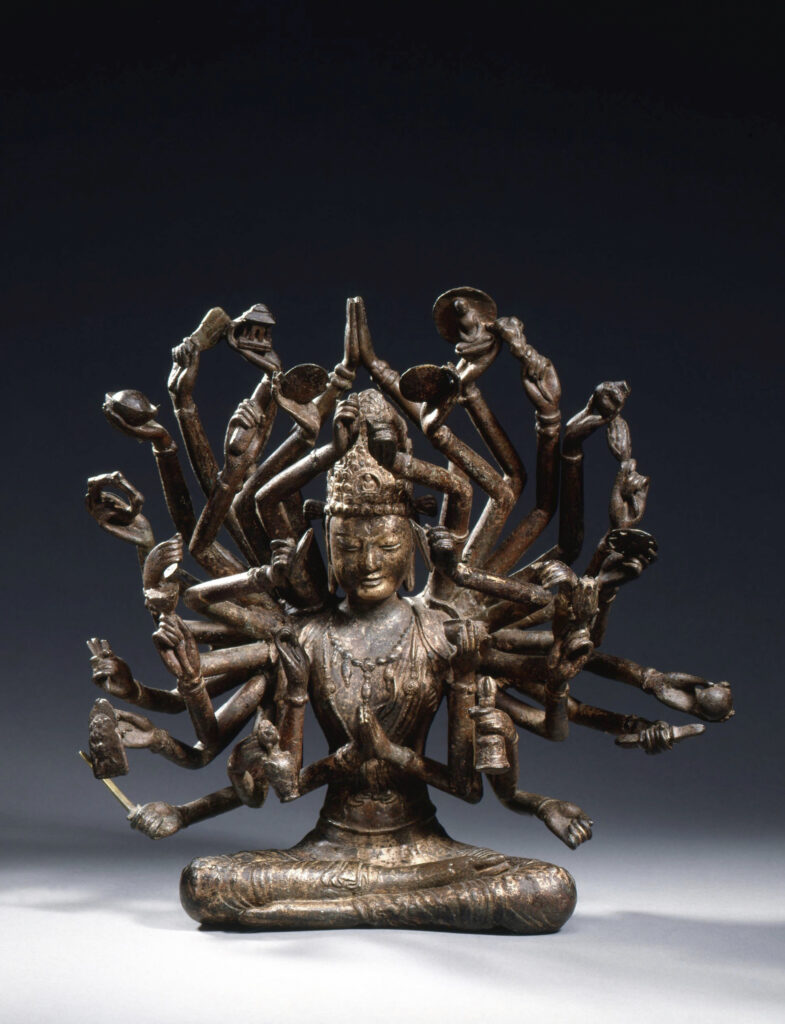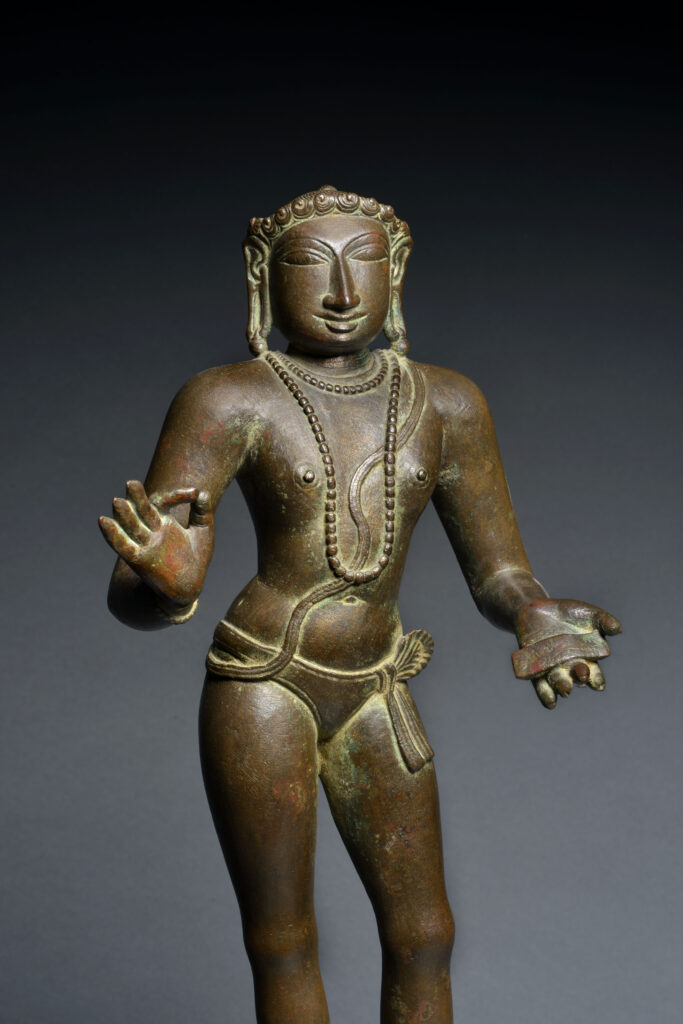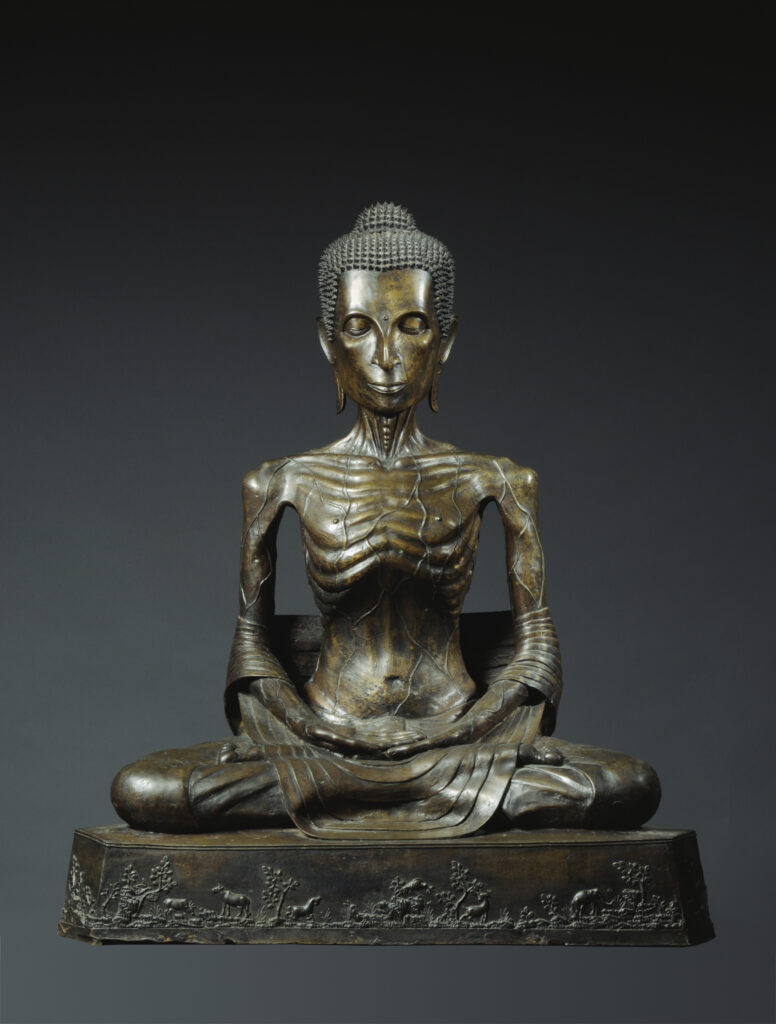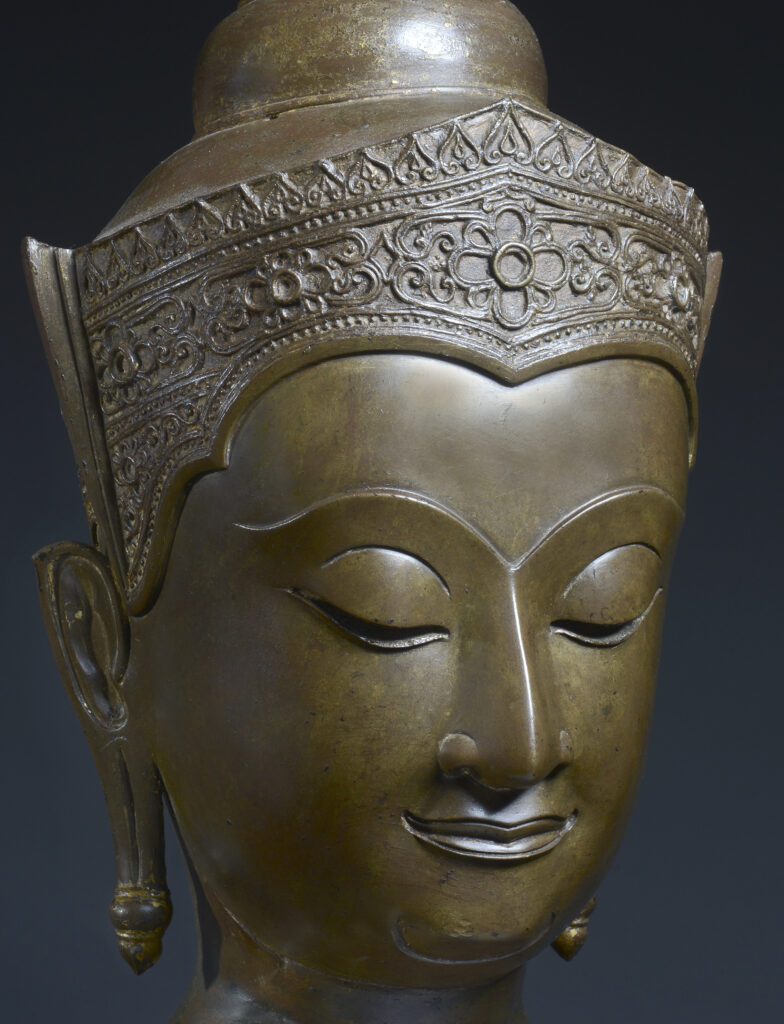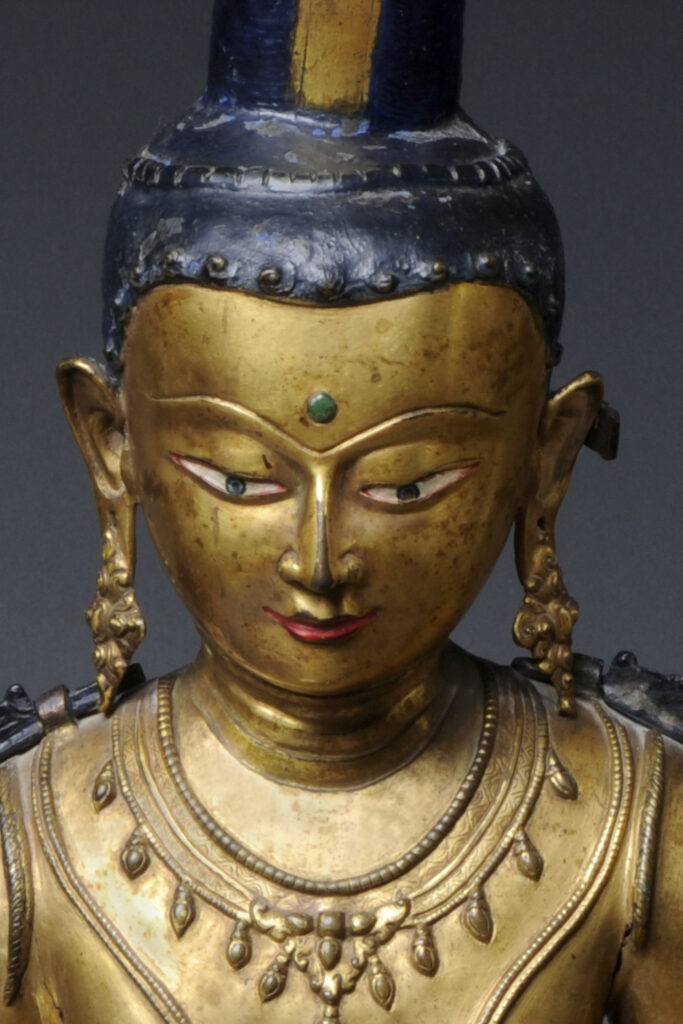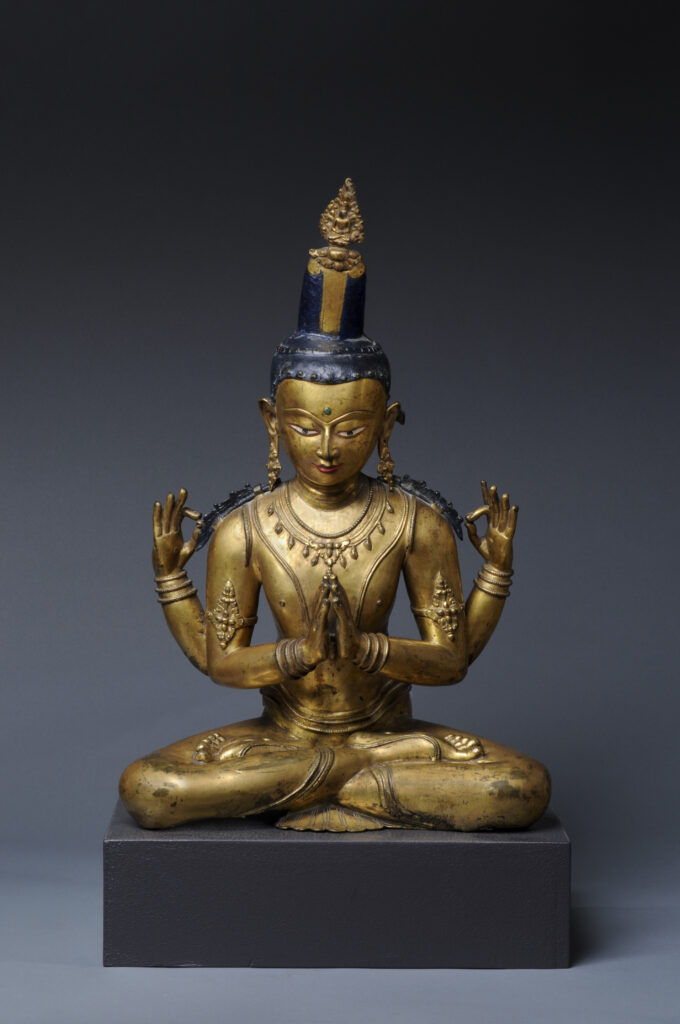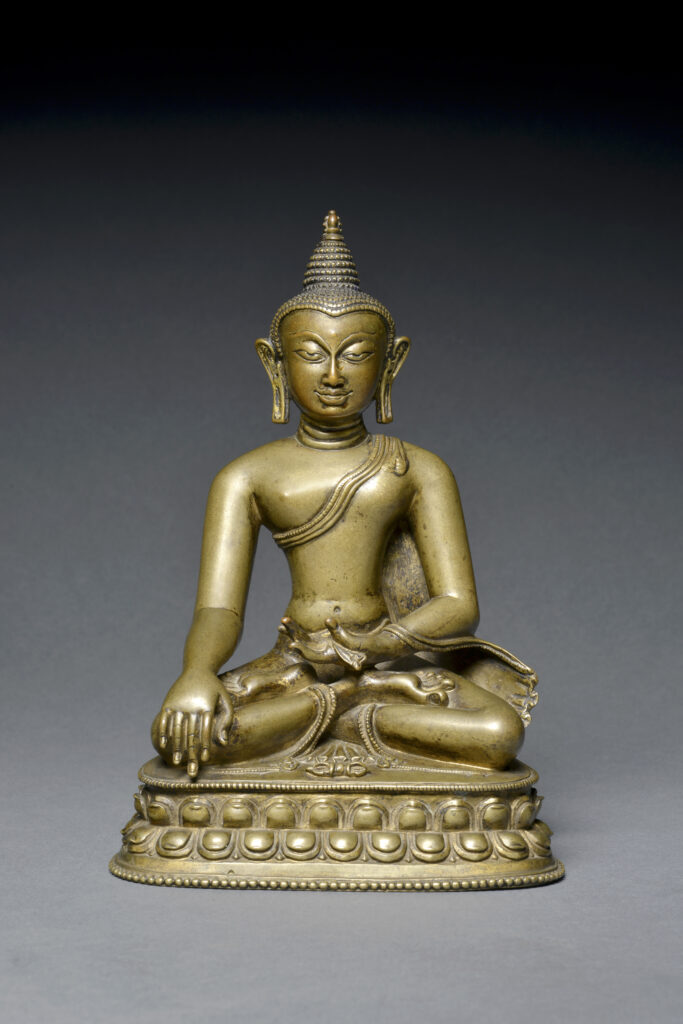Living Gods of Asia
Exhibition 25 Nov – 12 Dec 2023
RAMA EN SITA
India, Orissa 15th century,
Rich bronze alloy, height 21 cm.
The love-story of Rama and Sita is an important tale from the Hindu religion, ‘The Ramayana’. To celebrate the power of goodness, Hindus celebrate Diwali every year by lighting candles and setting off fireworks. This helps them to remember Rama and Sita’s story, and the significance of its message.
The artists in Orissa succeeded in creating a distinguished style of their own, clearly recognizable for their iconographic variation, more abstract, and with powerful precense. These two extremely fine solidly cast are completely modelled in the round and have a striking balance from all angels, revealing their emotional and physical relationship.
Images depicting Rama and Sita are extremely rare in the art of Orissa. The rich bronze alloy containing precious metal, and the natural, old, handled, surface, complement the overall esthetic.
Provenance:
Ex collection Ron Fitzgerald, Montreal, Canada 1984-2022
Provenance statement by B.N. Aryan Baij, M.A. in history, Art Consultant, 15 July 2023
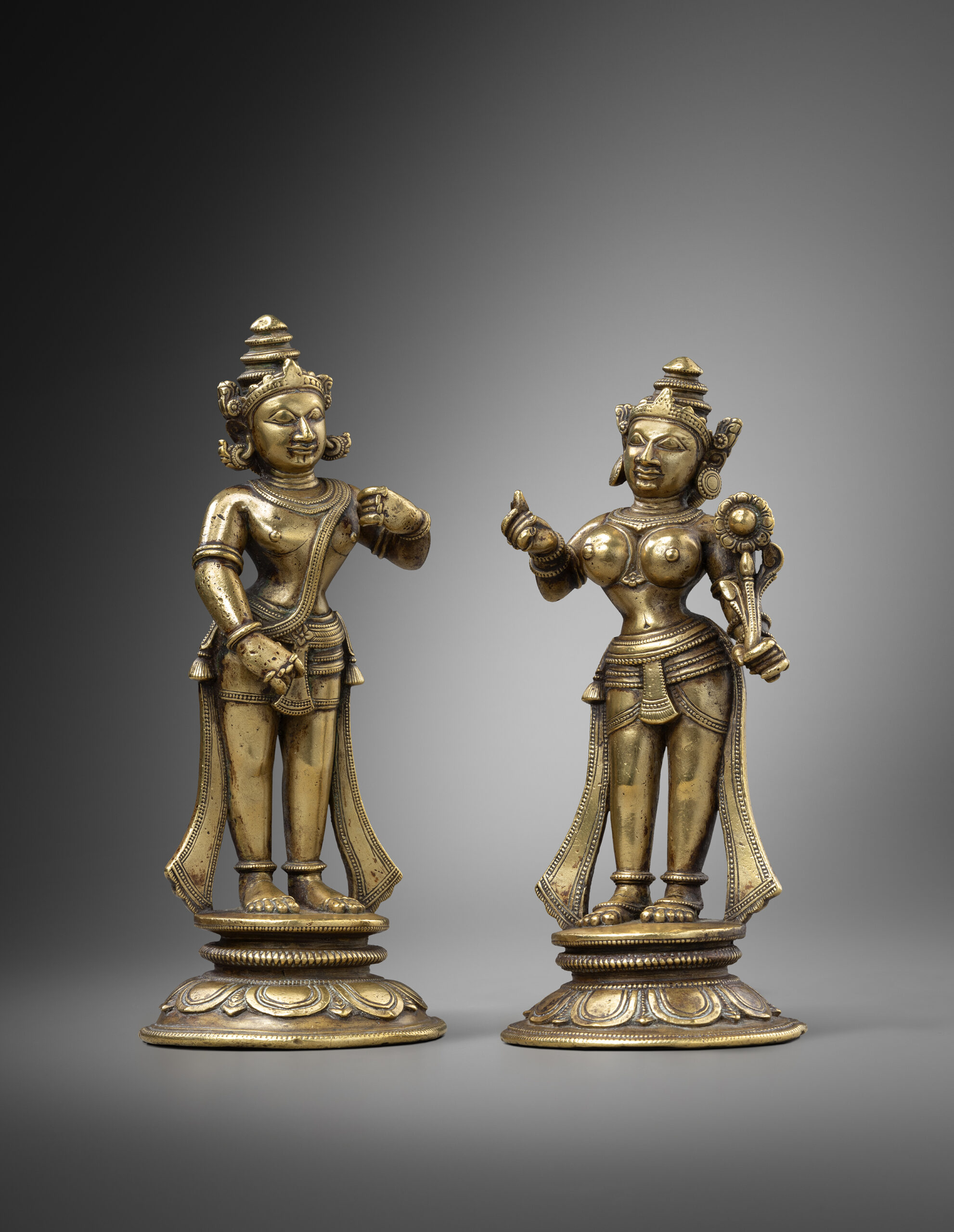

GE-LUG-PA LAMA
China (Sino-Tibet), 18th century
Gilt bronze, height 25,5 cm
The present Lama is a classic depiction of an eminent teacher of the Dharma in Tibetan Buddhism. His typical pointed tall yellow cap and the wearing of rich engraved yellow cloths are consistent with spiritual teachers from the Ge-Lug-Pa sect. Having emerged in the 15th Century through the reforming efforts of Tsongkhapa, adhérence to the Gelugpa sect is considered to be purest form of Tibetan Buddhism.
The present bronze is striking for its powerful volume and expressive energy. The well defined robes flow with large folds into each other and are masterfully engraved with flower motifs and fine designed patterns. The heavy casting with original gilding and impressive volume add a lifely touch to the whole image. Traces of cold gilding remain on the Lama’s lifely face. The original seal has been engraved with a vishvavajra, the four cardinal points of the universe.
Provenance:
Collection Lingero, Brussels, before 1975
Collection Claude de Marteau, Brussels, 1975-1985
Collection Mr. and Mrs. Dr. J. P. Yverneaux 1985-2015
Private collection, 2015-2023
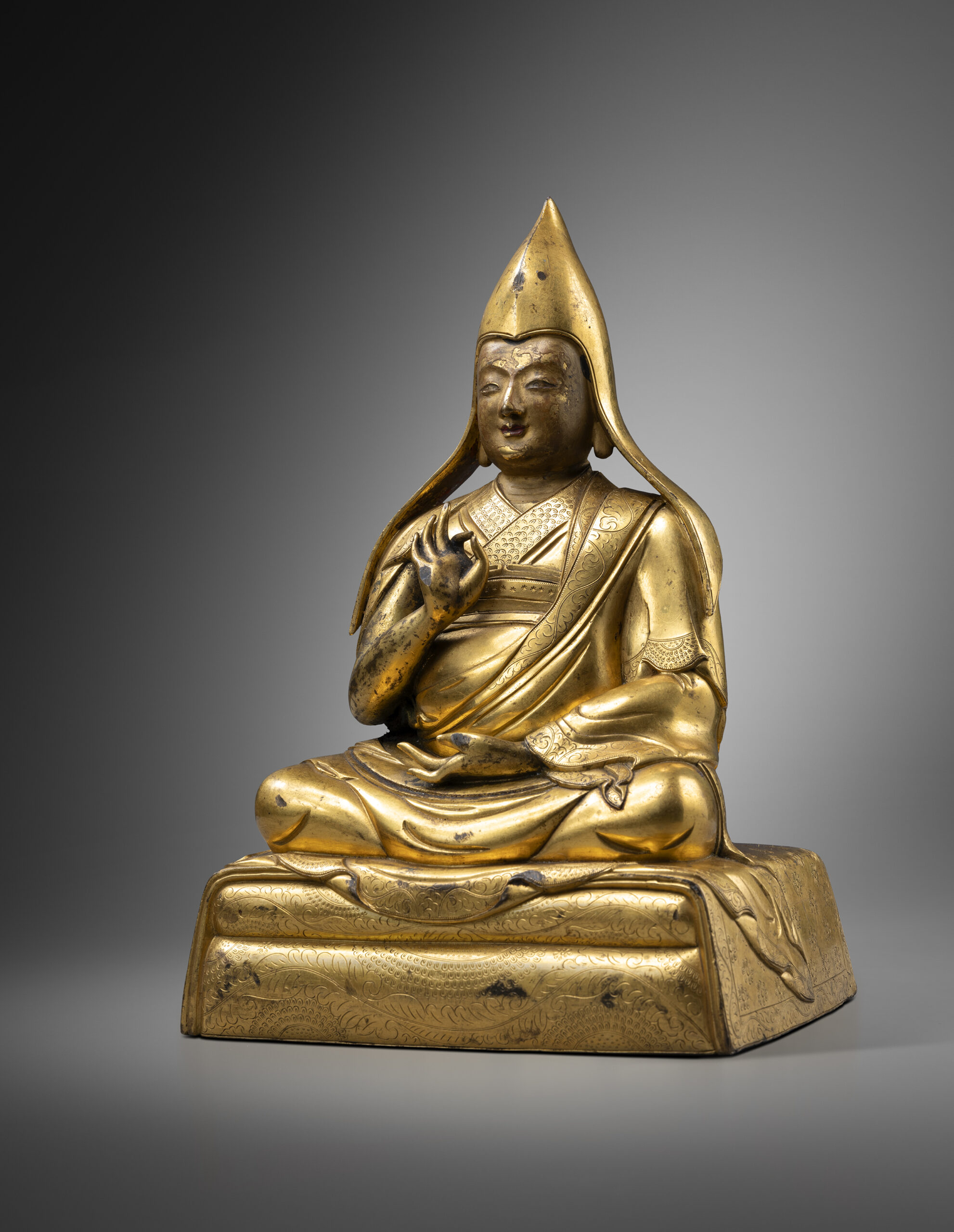

HEAD OF BUDDHA SAKYAMUNI
Thailand, Ayudhia Kingdom period 16th century
Bronze, cast in the lost wax method, height 38 cm
In this rare image of historical Buddha Sakyamuni, he wears a crown, presenting himself as a universal monarch. The magnifient image of the crowned Sakyamuni recalls the splendor of the Buddha in heaven, where he reveals himself to the bodhisattvas.
In the Ayudhia period, bronze casting techniques reached an extraordinary level of sophistication. The rendering of the jewellery and crown and the superbly stylized facial features are supremely accomplished in masterfully achieved thin bronze casting, exemplifying the style of the period. The pure volume of the head, the perfection of contour and serene facial features are noteworthy. Complemented by an attractive greenish natural patina, they create their own aesthetic.
This life-size and crowned head of Buddha is a classic example of the period and belongs to the finest and most expressive known examples.
Provenance:
Collection Bluett & Sons, London, 1980s.
Mounting by Colin Bowles Ltd, London, 1990s.


Vishnu
Nepal, Malla kingdom period 15th century
Copper alloy, traces of gilding, height 59 cm
Vishnu is portrayed as the divine Hindu protector and preserver of order, assuming a symmetrical posture, his four arms counterbalancing one another; two in front symbolizing his presence in the human world and two in the back for his relationship to the spiritual realm.
The present heavy cast bronze Vishnu is the largest image known in western collections. The god’s importance is in addition emphasized by precise proportioned body-volumes, natural features of the expressive face, and with each finger taking its own position. Noteworthy is the pleated ornament between the legs and the curved band in front of the gods dye, beautifully decorated with pearls and flower motifs.
Published: Pierre Cornette de Saint Cyr, Paris Hotel Drouot Richelieu, 28 April 2000, and cover catalogue.
Provenance:
Private Collection France, before 2000
Pierre Cornette de Saint Cyr, Paris Hotel Drouot Richelieu, 28-04-2000, no 24.
Collection Laurent Solomon, Singapore 2005-2023
Provenance statement by Jean-Luc Estournel, expert Arts d’Asie, 25-09-2023.
